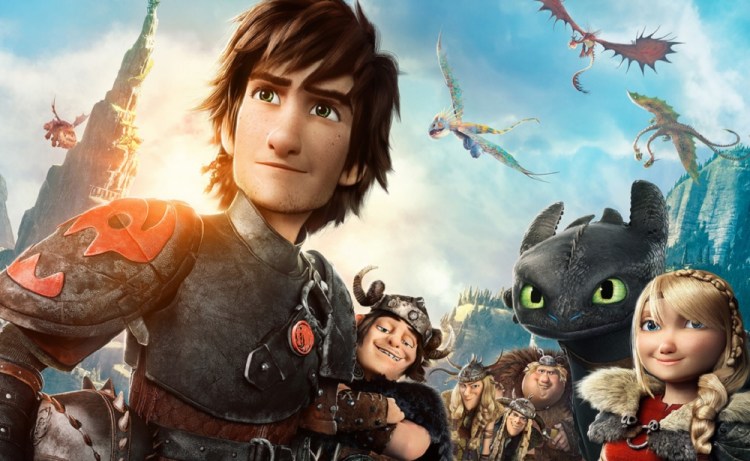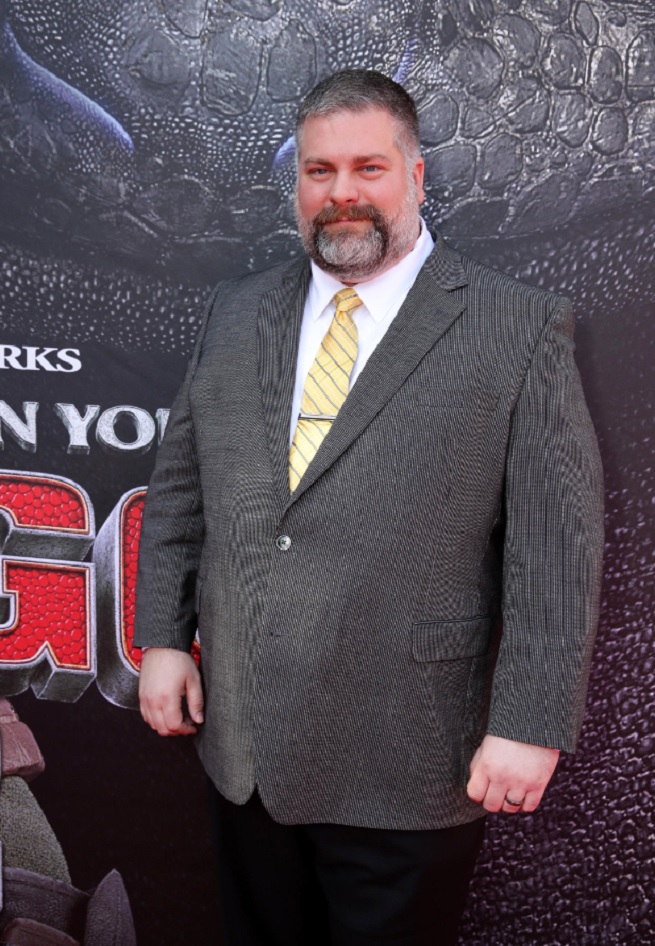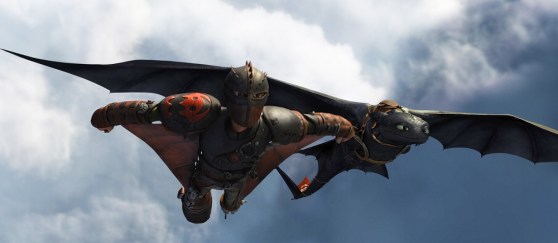DeBlois: Not really. Animators make requests as they go. “It would be great to have a simulation of loose skin between wing-finger membranes that we don’t have to animate by hand.” That wasn’t available when we started, but it’s available now. It’s just a matter of putting the request out there and giving the engineers time to create it.
Same with fat jiggle. That was another one. With some of the big, meaty characters, you want a certain amount of bounce and settle in a realistic way. It’s time-consuming for the animator to do it themselves. That’s since been created.
VB: For the art style, there are a lot of cartoon faces on the humans. Do you ever want to try out more realistic human faces for any of your work, besides maybe this one? Or do you think it’s not possible?
DeBlois: It gets better all the time, but there seems to be a limitation with photorealism that creates an unnerving sense of lifelessness, strangely. Until we learn to capture the exact nuances of eye darts and every little flex and relax and detail of human expression, it’s always going to feel strange.
Until then, aesthetically, if we take Dragon as an example, it’s a deliberate choice to caricature our characters and a certain amount of the world. It speaks to the story, our character feeling like a small and rather insignificant force in this world he lives in.
That’s not to say we don’t bring naturalism into the acting. It does have this interesting effect, where you know you’re watching a certain amount of a caricatured human being acting in a very believable way. It allows the animators to amplify and exaggerate human expression, so that it becomes that much more effective in portraying the emotion.
We’re very conscious of avoiding what’s dubbed the “uncanny valley,” for that very reason. We make specific choices to remove a certain amount of detail, so we don’t end up with that hyperrealistic look.
The interesting thing about Dragon is that it has an effect where you you begin to forget you’re watching a cartoon. The textures themselves are so believable – the fabric, the fur, the hair, the environments – and also the performance leads you to almost forget that sense of caricature. I’ve heard a lot of people say they forgot they were watching an animated film. Which is a compliment, in a weird way.
VB: Do you want viewers to not be able to discern any computer-animated quality? Tangled had this combination, something more like hand-drawn versus computer-animated scenes. You could tell when it switched over. This part looks much more computerized than that part.
DeBlois: For us it’s a choice of, we want it to feel a little whimsical, a little larger-than-life, a little caricatured. But if the task ahead of us was to create a CG character that blended flawlessly into a live-action environment, I think the technology is getting better all the time to try to create that illusion and pull it off without that unsettling feeling that something’s not quite right.
VB: Speaking of that, on Dragon 2, at what point where you still working?
DeBlois: We had our international première at the Cannes film festival on May 16. I think we were still rendering images by May 8.
There’s an old saying in the industry, that no movie is ever finished. It’s just released. I believe we overnight-shipped a DCP to Cannes at the moment before they would have said, “If you do not give us something, it is not playing.”
These were last images that we were just trying to get right. They were already great. We just wanted to make them better.
That’s the flip side of the saying – you need exactly as much time as you have. If you have the time you’ll take it.

VentureBeat's mission is to be a digital town square for technical decision-makers to gain knowledge about transformative enterprise technology and transact. Learn More



